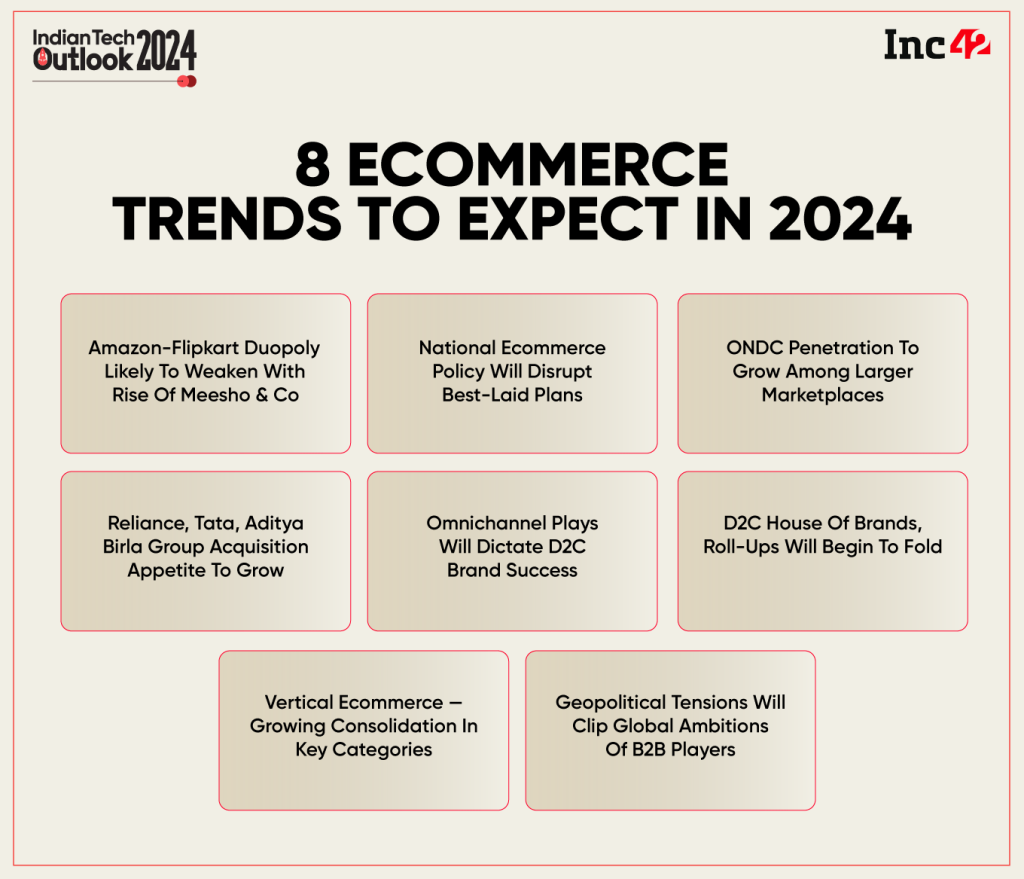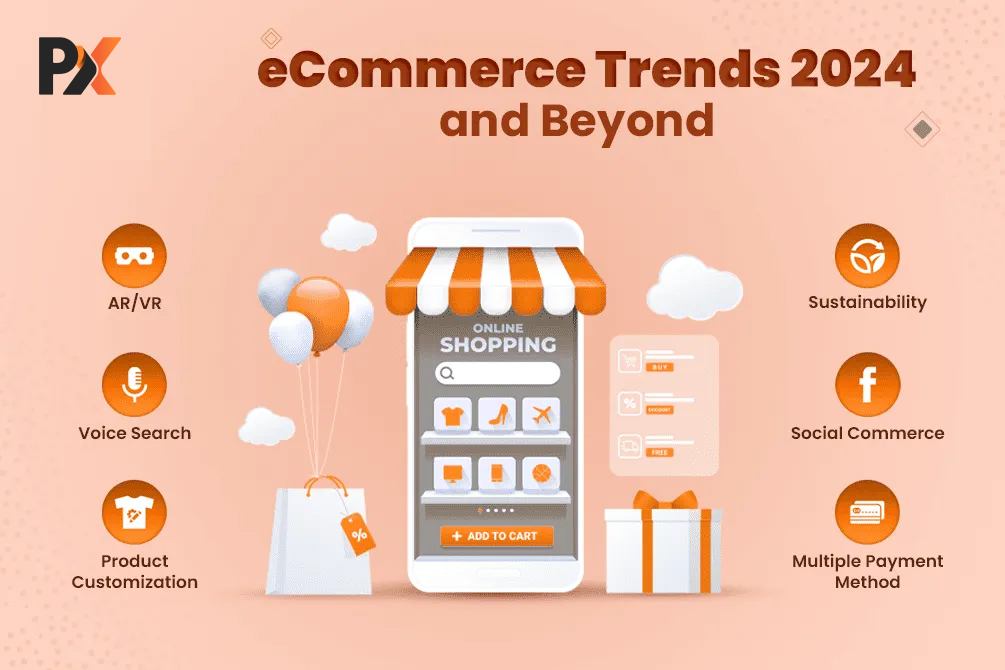E-commerce has experienced exponential growth in recent years, driven by technological advancements and changing consumer behavior. As we move into 2024 and beyond, several emerging trends are poised to reshape the landscape of online retail.
1. Artificial Intelligence (AI) and Machine Learning
AI and machine learning are becoming increasingly prevalent in ecommerce, enabling businesses to:
- Personalize customer experiences: AI algorithms can analyze customer data to deliver highly personalized product recommendations and marketing campaigns.
- Optimize pricing: AI can help businesses set optimal prices based on factors such as demand, competition, and product costs.
- Improve customer service: AI-powered chatbots can provide 24/7 customer support and automate routine tasks.
- Enhance fraud detection: AI can identify fraudulent transactions and prevent losses.
Data: According to a McKinsey report, AI is expected to add $1.2 trillion to the global economy by 2030, with a significant portion of that growth coming from the retail industry.
2. Voice Commerce
Voice assistants like Amazon Alexa and Google Assistant are becoming increasingly popular, leading to a rise in voice commerce. This trend allows customers to shop hands-free, simply by speaking commands.
- Optimize for voice search: Ensure your products and services are optimized for voice search by using natural language keywords and phrases.
- Create a seamless voice experience: Provide clear and concise product descriptions and make it easy for customers to navigate your website using voice commands.
Data: Voice commerce is expected to reach $40 billion in the United States by 2024, according to Juniper Research.
3. Augmented and Virtual Reality (AR/VR)
AR and VR technologies are transforming the way customers experience products. By allowing customers to visualize products in their own environment or try them on virtually, AR and VR can enhance the shopping experience and increase conversions.
- Invest in AR/VR technology: Explore AR and VR platforms that can be integrated into your ecommerce website or app.
- Create engaging experiences: Develop AR/VR experiences that showcase your products in a unique and interactive way.
Data: According to a report by PwC, AR and VR are expected to contribute $1.5 trillion to the global economy by 2030.

4. Social Commerce
Social media platforms are increasingly becoming marketplaces, with features like shoppable posts and live streaming enabling customers to discover and purchase products directly within their social feeds.
- Leverage social media platforms: Create engaging social media content that promotes your products and encourages customers to shop.
- Partner with influencers: Collaborate with influencers to reach a wider audience and drive sales.
Data: Social commerce is expected to grow at a compound annual growth rate (CAGR) of 25% between 2020 and 2025, according to eMarketer.
5. Headless Commerce
Headless commerce refers to the decoupling of the front-end (customer-facing) and back-end (commerce engine) of an ecommerce website. This approach allows for greater flexibility and customization, enabling businesses to deliver personalized experiences across multiple channels.
- Consider a headless commerce solution: If you want to create a more flexible and scalable ecommerce platform, explore headless commerce options.
Data: Headless commerce is expected to grow in popularity as businesses seek to provide more personalized and engaging customer experiences.
6. Subscription Commerce
Subscription models are becoming increasingly popular, offering customers recurring access to products or services. This can provide a steady stream of revenue and foster long-term customer relationships.
- Identify potential subscription products or services: Consider which products or services could be offered on a subscription basis.
- Create a compelling subscription model: Offer flexible subscription options and provide added value to encourage customers to sign up.
Data: The subscription economy is expected to reach $1.1 trillion by 2025, according to McKinsey.
7. Omnichannel Commerce
Omnichannel commerce is the seamless integration of online and offline shopping experiences. This trend allows customers to shop across multiple channels, such as websites, mobile apps, and physical stores.
- Create a unified customer experience: Ensure that your online and offline channels are consistent and provide a seamless shopping experience.
- Offer flexible fulfillment options: Provide customers with options like buy online, pick up in-store (BOPIS) and ship-to-store to meet their preferences.
Data: Omnichannel retailers are expected to experience 10% higher sales growth than single-channel retailers, according to Forrester.
8. Mobile Commerce (m-commerce)
Mobile commerce continues to grow rapidly as more consumers shop on their smartphones and tablets.
- Optimize your website and app for mobile: Ensure that your website and app are responsive and provide a seamless mobile shopping experience.
- Offer mobile-specific features: Consider features like one-click checkout, mobile wallets, and augmented reality to enhance the mobile shopping experience.
Data: Mobile commerce is expected to account for 73% of all e-commerce sales by 2025, according to Statista.
9. Sustainable Ecommerce
Consumers are becoming increasingly concerned about sustainability, and businesses are responding by adopting more eco-friendly practices.
- Reduce your environmental impact: Minimize packaging, use sustainable materials, and implement eco-friendly shipping practices.
- Communicate your sustainability efforts: Highlight your sustainability initiatives to attract environmentally conscious customers.
Data: According to a survey by Confluent, 73% of consumers are willing to pay a premium for sustainable products.
10. Data-Driven Decision Making
Data analytics plays a crucial role in ecommerce, enabling businesses to make informed decisions based on customer data.
- Collect and analyze customer data: Use analytics tools to track customer behavior, preferences, and purchase history.
- Use data to optimize your operations: Use data-driven insights to improve your website, marketing campaigns, and customer service.
Data: According to a report by McKinsey, companies that leverage data analytics are 23 times more likely to acquire new customers, 6 times more likely to retain existing customers, and 19 times more likely to be profitable.
By staying ahead of these emerging trends, ecommerce businesses can position themselves for long-term success.





Leave a Reply